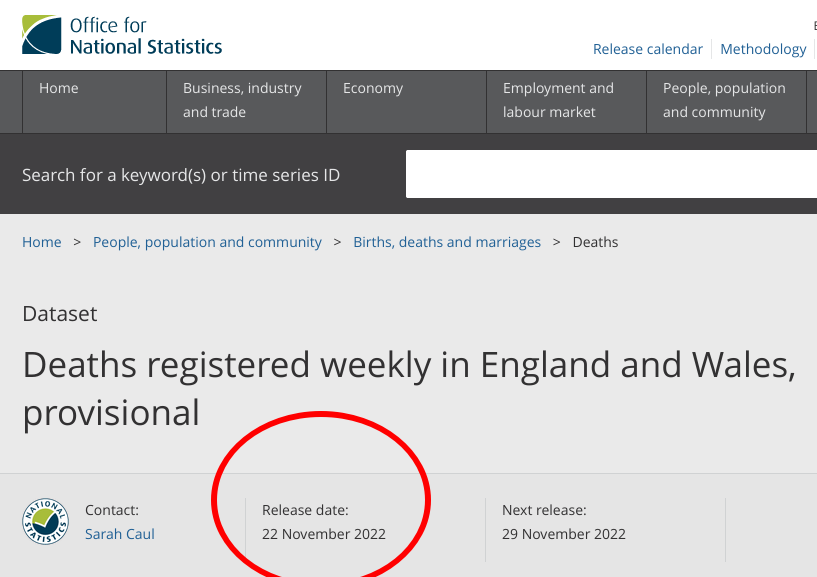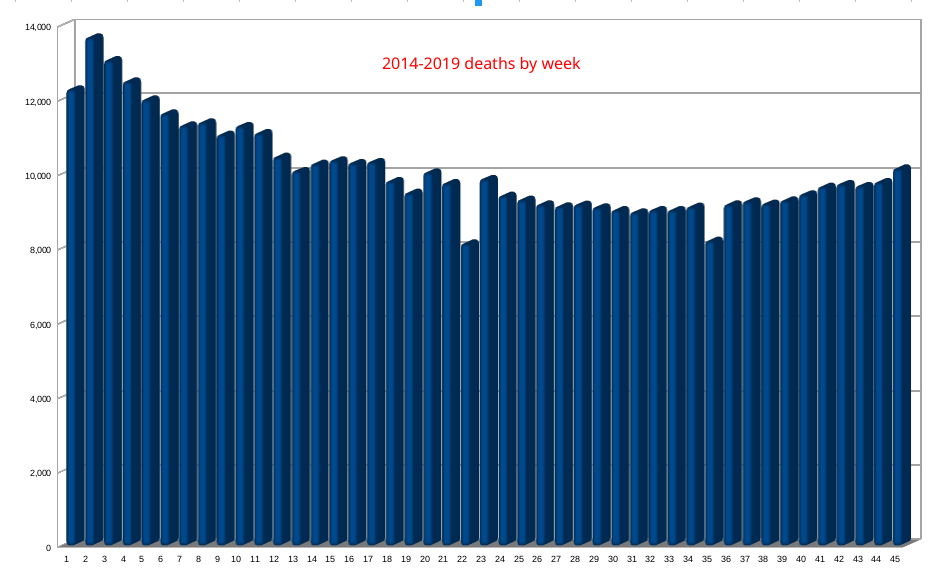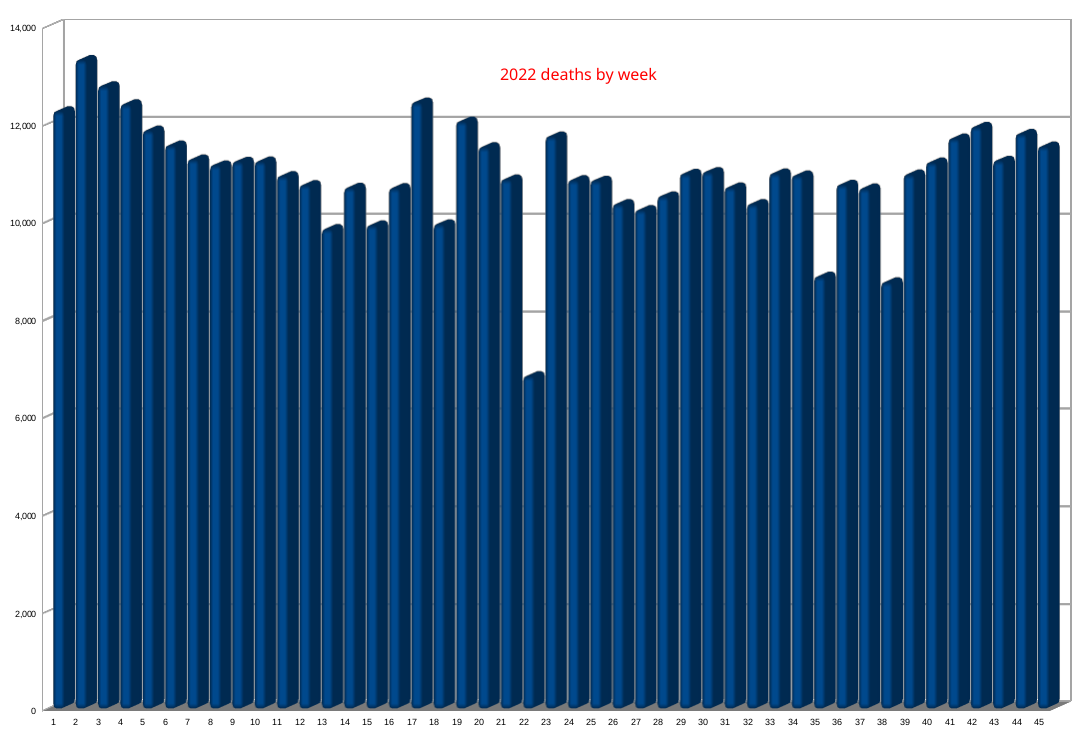Statistics About COVID-19 Vaccines in the United States
Description:
58% of covid US deaths now in the vaccinated
Kaiser Family Foundation vice president Cynthia Cox
www.cdc.gov/vaccines/covid-19/effectiveness-resear…
covid.cdc.gov/covid-data-tracker/#rates-by-vaccine…
www.cdc.gov/coronavirus/2019-ncov/vaccines/effecti…
data.cdc.gov/Public-Health-Surveillance/Rates-of-C…
www.washingtonpost.com/politics/2022/11/23/vaccina…
58% of coronavirus deaths in August were people who were vaccinated or boosted
(people who had completed at least their primary series of vaccines)
Therefore 42% coronavirus deaths in August were people who were unvaccinated
First time there were more deaths covid deaths in the vaccinated versus the unvaccinated
covid.cdc.gov/covid-data-tracker/#vaccinations_vac…
In September 2021
Vaccinated people, 23% of coronavirus fatalitiesIn January and February 2022
Vaccinated people, 42% of coronavirus fatalities
We can no longer say this is a pandemic of the unvaccinated
(who conducted the analysis on behalf of the Post)
www.cdc.gov/mmwr/volumes/71/wr/mm7144a3.htm?s_cid=…
Safety Monitoring of Bivalent COVID-19 mRNA Vaccine Booster Doses Among Persons Aged ?12 Years — United States, August 31–October 23, 2022
On August 31, 2022
FDA authorized bivalent, Pfizer-BioNTech and Moderna
mRNA encoding the spike protein from original strain of SARS-CoV-2,
and from Omicron BA.4 and BA.5
Advisory Committee on Immunization Practices (ACIP) recommended,
all persons ?12 years receive an age-appropriate bivalent mRNA booster dose
v-safe
a voluntary smartphone-based U.S. safety surveillance system,
established by CDC to monitor adverse events after COVID-19 vaccination
As of 3rd October, 10 million users
icandecide.org/press-release/breaking-news-ican-ob…
Vaccine Adverse Event Reporting System (VAERS)
Total data, August 31–October 23, 2022
14.4 million received a bivalent Pfizer-BioNTech
8.2 million adults (?18 years) a bivalent Moderna booster dose
v-safe, among the 211,959 registrants (aged ?12 years)
August 31–October 23, 2022
Reported in the week after vaccination
Injection site reactions, 60.8%
Systemic reactions, 54.8%
Fewer than 1% of v-safe registrants reported receiving medical care
Vaccine Adverse Event Reporting System (VAERS)
5,542 reports of adverse events after bivalent booster vaccination (?12 years)
95.5% of reports were nonserious
4.5% were serious events
Health care providers and patients can be reassured that adverse events reported after a bivalent booster dose are consistent with those reported after monovalent doses.
Relative risk
Absolute risk not given
Health impacts after COVID-19 vaccination are less frequent and less severe than those associated with COVID-19 illness (2).
Relative risk
Absolute risk not given
This is their Reference 2
Block JP, Boehmer TK, Forrest CB, et al. Cardiac complications after SARS-CoV-2 infection and mRNA COVID-19 vaccination—PCORnet, United States, January 2021–January 2022. MMWR Morb Mortal Wkly Rep 2022;71:517–23. doi.org/10.15585/mmwr.mm7114e1 PMID:35389977
myocarditis; myocarditis or pericarditis; and myocarditis, pericarditis, or MIS,
within 7-day or 21-day risk windows after the index date
Comparisons between after vaccine and after infection
Relative risk
Absolute risk not given
Review of v-safe Data
During August 31–October 23, 2022
211,959 v-safe registrants had a bivalent booster
1,464 (0.7%) were aged 12–17 years
68,592 (32.4%) were aged 18–49 years
59,209 (27.9%) were aged 50–64 years
82.694 (39.0%) were aged ?65 years
Fourth dose
96,241; 45.4%
Fifth dose
106,423; 50.2%
In the week after receipt of the bivalent booster dose
Local injection site reactions
49.7% among aged ?65
72.9% among aged 18–49
Systemic reactions
43.5% among aged ?65
67.9% among aged 18–49
Systemic symptoms
Fatigue (30.0%–53.1%)
Headache (19.7%–42.8%)
Myalgia (20.3%–41.3%)
Fever (10.2%–26.3%)
Reported inability to complete normal daily activities
10.6% among aged ?65 years
19.8% among aged 18–49 years
Receipt of medical care
Reported by 0.8% of registrants






 Filed under:
Filed under: 

